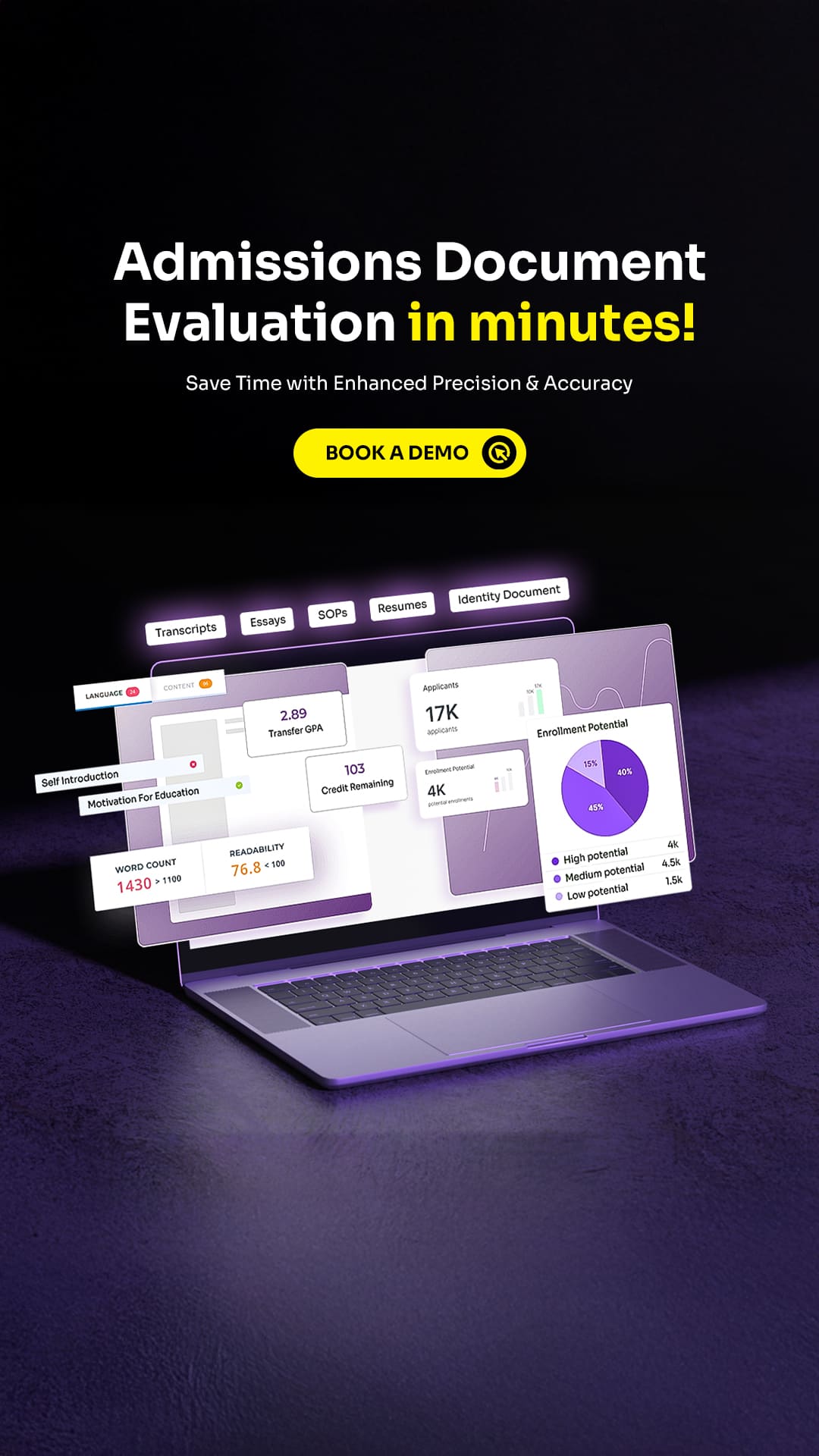In a world transformed by remote working and digital education, online learning continues to boom, and India is leading the charge. Coursera reported over 27 million registered Indian learners in 2024, surpassing Europe for the first time in learner numbers on the platform. As students and professionals adapt to an ever-changing workplace, courses in Artificial Intelligence (AI), data science, and cybersecurity are at the forefront. Notably, 60% of the top courses in India this year focused on AI and Machine Learning (ML), highlighting the growing demand for upskilling.
Table Of Contents
These trends underline the vast potential of distance learning. But how can education providers tap into this momentum and scale enrollment effectively? Let’s dive into proven strategies to attract, engage, and retain learners in the digital era.
Distance Learning: Distance learning is a method of educating pupils over the internet. The internet is used to provide lectures and learning resources. Students work at home rather than in a classroom.
Advantages of Distance Learning: Distance learning has several wonderful advantages. For one thing, it is less expensive to support. Another advantage of online education is that it is not geographically constrained. For example, you do not need to be in the United States to attend classes at an American institution.
Because of the coronavirus, distant learning, which colleges and institutions generally use, is now being used by elementary and high school students. Entire school districts and campuses are being compelled to develop and implement successful online learning possibilities.
Disadvantages of Distance Learning: However, this strategy may disadvantage some kids. Students who do not have access to a computer or the internet may suffer. Those who require extra assistance with motivation and organization may also struggle when separated from a regular school setting.
Types of Distance Learning
Distance learning falls into synchronous learning and asynchronous learning.
Synchronous Learning: Synchronous is defined as “at the same moment.” It refers to a way of delivering instruction in real-time. It necessitates online live conversation. It does this through the use of technology such as teleconferencing. Synchronous learning is less adaptable than other types of online education. After all, students must meet with their teacher and sometimes their classmates at predetermined times. This method restricts a student’s capacity to learn at their speed. Some students who like the independence of an asynchronous classroom may be disappointed.
Asynchronous Learning: Students in asynchronous distant education are given a series of weekly deadlines. They are allowed to work at their own pace. More chances for student involvement are included. Students can access course information outside planned meetings or classes and engage on their own time through online dialogues, quizzes, or video comments. The flexibility of asynchronous learning benefits both teachers and students since it allows them to generate and consume material when it is convenient for them.
What does a typical distance learning course look like?
Distance learning courses at several higher education institutions have the same length as face-to-face ones – eight weeks or a complete semester.
The teacher will:
- Establish the theme for each week.
- Provide ideas for discussion.
- Distribute tasks with explicit instructions.
- Capture lectures, short movies, or presentations.
The pupils then spend the next week:
- Attending lectures, videos, or presentations
- Investigating potential conversation topics
- Making discussion posts
- Assignment submissions
- Participating in video conferencing
- Emailing the teacher
Are distance learning degrees certified?
Distance learning has evolved significantly, shedding its old reputation as a lesser alternative to traditional education. With the rise of advanced video technology and interactive tools, online education has become more engaging, making it easier for students to stay motivated and connected.
As more top universities and institutions offer accredited online programs, distance learning has gained significant legitimacy. Today, online degrees are widely accepted, providing students with the flexibility to balance education with work or personal commitments while earning a quality certification.
5 proven strategies to scale enrollment for distance learning courses
Use technology to bridge the gap and foster inclusion.
- Campus tours, prospective student weekends, and live events, as astute admission staff knows, are among the most powerful and persuasive enrollment marketing techniques for converting engaged students.
- However, just because everyone is at home does not preclude institutions from using successful strategies to bring these activities to their prospective pupils.
- Using technology solutions such as Skype, Zoom, live social streaming, and more involved video solutions to provide their students with access to campus tour guides, admissions staff, and campus tours—particularly for students interested in hybrid programs or returning to campus in the spring or beyond.
- Making potential students feel welcome and enthusiastic about what their university has to offer, both online and in person.
Open remote learning enrollment early
- During a time when high school seniors should have been focused on their final year experience, many became stranded at home and are now mourning the end of their high school careers.
- They are ready to go forward, they want to get ahead, and they want something to look forward to.
- The following is some advise from Reggie Hill, Vice President of Marketing and Enrollment at the University of the Ozarks:
- “Enrollment teams should collaborate with academic teams to begin registration as soon as possible.” Now is the moment to firmly establish your university’s students. Your enrollment team will then be free to work the phones and fill the second half of your class.”
- Institutions should use this opportunity to showcase their online courses as a method for high school grads who are already interested in their institution to jump-start their college education and prepare for a bright future.
Adjust your audience and messaging strategy
- Online education is no longer just for non-traditional students (working professionals, parents, etc.). Traditional students are increasingly choosing online learning for flexibility and convenience.
- Traditional students are opting for online courses to stay closer to home, attend more affordable universities, or take gap years before committing to full-time on-campus education.
- Institutions must broaden their marketing approach to appeal to both non-traditional and traditional students by emphasizing the flexibility and benefits of online learning for all types of learners.
AI- and Analytics-Driven Student Support and Teaching
- Machine learning, SMS messaging, and artificial intelligence (AI) are also having an increasing influence on improving student services and support.
- Many universities, like commercial businesses, are beginning to deploy blended and fully AI-based chatbots to support students and answer questions — integrating with learning management systems, enabling blended use cases that empower student service personnel with data, or using pattern recognition to assist students in navigating key admissions, enrollment, and course deadlines.
- These ideas are also spreading into campus service digitization via smart speakers in student residences – fundamental self-service technologies that make higher education more customer-centric while lowering costs.
- Institutions such as Georgia Tech, which pioneered the use of an AI-based teaching assistant in its online degree programs, are also leveraging AI.
Digital Credentialing and Data-Driven Education-Workforce Alignment
- Another major trend is the digitization and proliferation of educational credentials, which is characterized by a rapid shift from static educational records and transcripts, which were previously an extremely analog process centered on degrees, to online, digital credentials focused on certificates and certifications that summarize achievement, skills, or competency.
- Employers and industry certification programs are driving this movement in collaboration with community colleges, extension schools, and university graduate programs — and it is key to the “unbundling” of degrees into shorter-form micro-credentials that may stack into a wider lifetime curriculum.
- Many elite business and extension schools have welcomed this trend and the potential income streams represented by new sorts of digital credentials.
Conclusion
- Students are eager to take the next step in their educational journey, and institutions need to ensure their communication reassures them that they are ready too.
- Prospective students are asking practical questions such as, “Is enrolling in college right now the right choice?” “What will the upcoming semester look like?” and “Are online courses a more affordable option for me?”
- Enrollment teams must strike the right balance by addressing current concerns while inspiring excitement and optimism for the future. Institutions should focus on the solutions they offer and the opportunities available for both in-person and online learning.
- By highlighting the effectiveness of their distance learning programs and the unique opportunities they provide, institutions can engage students and guide them confidently into their academic future.










No comments yet. Be the first to comment!
Leave a Comment